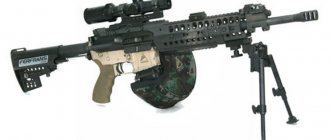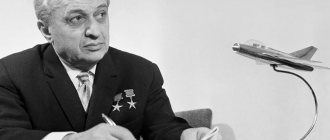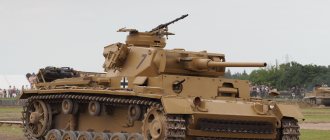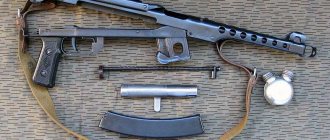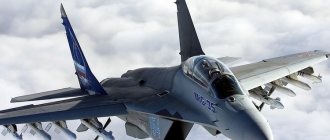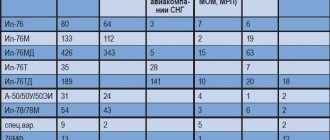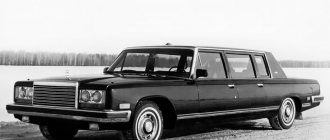Pavel Osipovich Sukhoi (1895-1975) - Soviet aircraft designer, Doctor of Technical Sciences, one of the creators of Soviet jet and supersonic aviation. Winner of a number of the highest state awards and prizes.
There are many interesting facts in the biography of Pavel Sukhoi, which we will discuss in this article.
So, here is a short biography of Sukhoi.
A dream given by Utochkin
The history of domestic aviation consists of an amazing intertwining of the destinies of those people who stood at its origins.
One of the pioneers of Russian aviation , Sergei Utochkin, who made demonstration flights in various parts of the Russian Empire to popularize it, could not even imagine what significance his usual flight over Gomel would have.
When Utochkin flew over the city, the high school students below watched his flight with delight, one of whom that day decided to connect his fate with aviation. The high school student's name was Pavel Sukhoi.
The future founder of the famous design bureau, whose aircraft are today considered one of the best in the world, was born on July 22, 1895 in the village of Glubokoye, Disnensky district, Vilna province of the Russian Empire, in the family of a teacher.
Pavel's father, Osip Andreevich Sukhoi, came from Belarusian peasants. Even in childhood, fellow villagers noticed that the boy had good abilities not only for peasant labor, but also for various sciences. At the village meeting, it was decided to raise money to send Osip to study at the Teachers' Seminary. So Osip Sukhoi acquired the profession of a school teacher, which was very honorable at that time.
In 1900, Osip Andreevich was offered to head a school for children of railway workers in Gomel. So the Sukhikh family moved from the village to the city.
Osip Sukhoi had six children - five girls and his only son, Pavel. The father tried to give his children a good education and broaden their horizons. In the Sukhikh house, everyone was fond of reading, playing the violin and singing, and they published a handwritten home magazine.
In 1905, Pavel Sukhoi entered the Gomel Men's Gymnasium. He studied well, and his choice of life path was influenced by the very flight of the pilot Utochkin.
Article on the topic
"Russian Farman". Igor Sikorsky revolutionized world aviation
Today's day
Today KB is a powerful concern with many branches and subsidiaries. Among them are NKP Sukhoi Attack Aircraft and JSC Sukhoi Civil Aircraft.
The latter is now headed by Konstantin Vasilievich Sidorov.
Among his military developments:
- SU-27 - fighter (Russian Knights are currently flying it);
- SU-30 - two-seat fighter (mainly exported);
- SU-33 - carrier-based fighter;
- Su-35 is a 4++ generation fighter.
The latest military aircraft of the Sukhoi Design Bureau is the Pak Fa (T-50), a fifth-generation fighter. And about a year ago, representatives of the concern announced the start of work on the sixth generation project...
Civil direction
The designer did not participate in the work on civil aircraft. The direction appeared in the design bureau after his death. But there are also peaceful aircraft of the Su brand:
- Superjet - passenger airliner;
- Su-80GP – cargo-passenger;
- Su-38l - agricultural.
The fate of the Sukhoi Superjet aircraft is ambiguous. In 2012, during a demonstration flight (Indonesia), he had an accident, killing 45 people.
But its production continues, the machine is used in many countries. The management of the joint stock company GSS JSC does not intend to abandon it. The Sukhoi Superjet is distinguished by a special arrangement of seats on the plane.
Fatal copies
In 1914, Pavel Sukhoi graduated from high school with a silver medal, having a “good” grade in Latin and German, as well as excellent grades in the other ten subjects.
Despite the fact that Sukhoi’s German was only “good,” he subsequently easily read aviation literature in German, and his knowledge of Latin allowed him to master other European languages to a level that allowed him to become familiar with materials on aviation.
A graduate of the gymnasium, Sukhoi dreamed of entering the Imperial Higher Technical School in Moscow, since at that time it was the only school in Russia that studied the theoretical and technical issues of aeronautics on heavier-than-air vehicles.
His father supported Pavel’s aspirations and, through a relative who lived in Moscow, sent his son the documents necessary for admission to the exams. Sukhikh’s relative turned out to be a cautious person, submitting to the selection committee not originals, but copies of documents. This was a violation of the existing rules, which is why Pavel Sukhoi was denied access to the exams.
But Pavel did not lose heart, went to Moscow himself and successfully entered the mathematics department of Moscow University.
Sukhoi did not forget about his dream. A year later, he submits documents for admission to the Technical School as expected and successfully passes the exams. Having entered the school, he becomes a member of the aeronautics club, which is headed by one of the founders of Russian aviation, Nikolai Zhukovsky .
It won't fly! What did the contemporaries of Wright, Chkalov and Gagarin doubt?
More details
War and other troubles
It seemed that Pavel Sukhoi managed to take a step towards his dream. But by that time, the First World War was raging with all its might, and the student Sukhoi was mobilized into the army. After graduating from the ensign school, he served as an artilleryman on the Western Front until October 1917. After Russia actually left the war, Pavel returned to Moscow, but then discovered that the Technical School was closed.
Sukhoi returned to Gomel and then received a position as a mathematics teacher in the city of Luninets, in Western Belarus.
Article on the topic
The man who invented wings. Sergei Ilyushin runway
Fate continued to test his strength: first he had to flee to Gomel, fleeing the Polish army that occupied Western Belarus, then he had to look for food for his family. At this time, Pavel suffered from typhus and then scarlet fever. He managed to survive, but complications with his throat led to his voice being permanently changed and sounding muffled. Most likely, this is why those who worked with Sukhoi called him a man of few words and rather dry in his communication.
Student of Tupolev
In 1920, the Council of People's Commissars issued a resolution on the return of students to universities. A Technical School was also opened in Moscow. In 1921, 26-year-old Pavel Sukhoi went to Moscow to continue his studies, which had been interrupted for six years.
He not only studied, but also worked in the evenings at Nikolai Fomin’s design bureau, where airships were designed. Sukhoi needed money - in 1923 he married his fellow countrywoman, a teacher, whom he met in Western Belarus.
Even before graduating from college, in 1924, Pavel Sukhoi began working as a draftsman in the experimental department of the Central Aerohydrodynamic Institute.
The time had come for the graduation project, and aircraft designer Andrei Tupolev .
Tupolev recognized great talent in the far from young student. The thesis “Single-seat fighter with a 300 horsepower engine” was successfully defended, and 30-year-old Pavel Sukhoi received the qualification “mechanical engineer”, and with it an offer from Tupolev to continue working together in the design department of TsAGI. Sukhoi was included in the design team of A. N. Putilov as a design engineer.
Jet Age
Having resumed work in 1953, the design bureau no longer worked on propeller-driven aircraft.
The era of jet engines was beginning, and the designer became interested in both them and machines capable of properly using them.
P.O. Sukhoi's jet-powered aircraft quickly managed to gain first positions in the world.
Multi-stage aircraft
Sukhoi's first mass-produced jet aircraft was the Su-7 fighter. Further, the design bureau more often produced aircraft with a combined purpose:
- Su-9 - interceptor fighter;
- Su-11 - interceptor fighter;
- Su-15 - interceptor fighter;
- Su-7B - all-weather fighter-bomber;
- Su-17 - fighter-bomber;
- Su-24 - front-line bomber;
- Su-34 is a multi-role fighter-bomber.
Among the first, Sukhoi combat aircraft received variable wing geometry, which significantly improved their flight performance.
Sky Strikers
In many countries, pilots call Su aircraft the best in their class. Therefore, the old models remain in service, and their production even continues.
Thus, the Su-24 first took off in 1970, and its production is planned until 2020. The Su-17 is still in service with 8 countries.
Sukhoi Su-25 attack aircraft are capable of carrying 32 different types of weapons, some simultaneously. They first saw combat in 1980, but the Rooks are still produced and in service in 17 countries around the world.
Su-2
High efficiency, extraordinary thinking, the ability to find an original solution to the most complex problems - these qualities displayed by Sukhoi very quickly distinguished him from other aircraft engineers. In a short time he rose from design engineer to deputy chief designer. In this capacity, being Tupolev’s “right hand,” he was involved in the creation of I-4, I-14 fighters, as well as the ANT-25 aircraft, which was used to fly to the United States via the North Pole.
Article on the topic
Wings for the Motherland. Andrei Tupolev taught Russia to fly
In 1936, a competition was announced in the Soviet Union to create a short-range bomber under the code name “Ivanov”. The winner of the competition was the project of Pavel Sukhoi, who received the right to create his own design bureau.
The Su-2 light bomber, Sukhoi's first in-house design, has been in mass production since 1940. In total, about 900 copies of the Su-2 and its advanced modification, the Su-4, were built.
The Su-2 is not one of the most famous Soviet aircraft, despite its high survivability in combat. Having completed approximately 5,000 sorties on the Su-2 in 1941, the Soviet Air Force lost 222 of these aircraft in battle and went missing, that is, one loss accounted for 22.5 sorties. This is approximately 1.6 times lower than the average losses of Soviet bomber aircraft during the first months of the war.
Comparing the Su-2 with another Soviet bomber, the Pe-2, experts note that, despite the higher tactical and technical characteristics of the “pawns,” the “dryers” died in battle on average two times less often.
Winged hero. How the first bomber “Ilya Muromets” defended Russia
More details
Pavel Sukhoi: genius of aviation thought
Pavel Osipovich Sukhoi, one of the founders of Soviet jet and supersonic aviation, was not only a talented engineer, but also an outstanding organizer. The design bureau he created continues to work effectively to this day, developing the ideas of its founder and confirming the faithfulness of the principles of his scientific school. The Sukhoi Design Bureau developed more than 100 types of aircraft, almost each of which was a breakthrough in the domestic and global aircraft industry.
Pavel Osipovich Sukhoi was born on July 22, 1895 in a small Belarusian village. Already in childhood, he showed extraordinary abilities in the exact sciences, in particular in mathematics and physics, for which he even received a silver medal after graduating from the Gomel men's gymnasium. In his certificate he had ten excellent grades and only two “fours” - in German and Latin. However, subsequently he freely read aviation technical literature not only in German, but also in English, French, Italian and other European languages.
With amazing tenacity, Pavel Osipovich sought to obtain the best education possible: first at Moscow University, where he entered in 1914, and then at the Imperial Moscow Technical School (later - Moscow Higher Technical School, and now - Moscow State Technical University named after N.E. Bauman). Due to the First World War and then the revolution, he had to interrupt his studies. But in the 1920s he returned to school and in 1925 received an engineering diploma.
By the way, the leader of his graduation project was Andrei Tupolev himself. It was he who recognized the talent of an aircraft designer in the young engineer and invited him to work at the Central Aerohydrodynamic Institute (TsAGI) in Moscow. The first project Sukhoi was involved in was the ANT-5 (I-4) fighter. Next is the all-metal I-14.
Airplane ANT-25
In 1932, Pavel Sukhoi first became the head of the design of the ANT-25 aircraft, which two years later set a world record for range and duration of flight along a closed route (hence its second short name - RD, “range record”). And in 1937, on it, the crews of Valery Chkalov and Mikhail Gromov made legendary flights across the North Pole to America.
Airplane ANT-37
In the fall of 1934, the A. Tupolev Design Bureau received the task of building the ANT-37 (DB-2) long-range bomber. In accordance with the requirements of the military, the aircraft had to have a range of at least 3000 km and reach a maximum speed of at least 350 km/h. Sukhoi, who already had experience in developing the ANT-25 and ANT-36 aircraft, was appointed head. In 1938, on the DB-2B Rodina aircraft, the crew of Valentina Grizodubova, Polina Osipenko and Marina Raskova made another record-breaking long-distance flight.
In the late 1930s, Pavel Osipovich won the competition to create the Ivanov short-range bomber. Thanks to this victory, it became possible to organize a separate, independent design bureau. It opened on March 5, 1940.
Su-2 aircraft
Work on the Ivanov ended with the creation of the first Su brand aircraft – the combat multi-role “short-range bomber” Su-2 (originally BB-1, “short-range bomber”). More than 900 Su-2 aircraft heroically fought during the Great Patriotic War in Bessarabia, Belarus, and defended the skies of Stalingrad.
During the war years, Pavel Osipovich Sukhoi continued to create more and more advanced combat vehicles. In 1943, for the development of the Su-6 attack aircraft, he was awarded the Stalin Prize, 1st degree.
Su-9 aircraft
After the appearance of the experimental Su-9 in 1945, the era of jet aircraft began in aviation. It was here that Pavel Osipovich was able to show his talent in full force. In just four years, the Su-11, Su-15, and Su-17 were created. Many developments by Sukhoi and his design bureau could be labeled “done for the first time”: retractable landing gear in flight, smooth metal skin, wing fuel tanks, an ejection pilot seat, a crew rescue system in a detachable cockpit, a booster in the control system, a braking parachute.
However, in 1949, by government decision, the Sukhoi design bureau was disbanded. Pavel Osipovich became Andrei Tupolev's deputy and, under his leadership, worked on a modification of the Tu-2 - the UTB aircraft.
Sukhoi became the head of the design bureau again only in May 1953. His team was tasked with studying the captured American Saber fighter. Some of the results of this research were creatively used by the designer in further work. And in October 1953, Pavel Sukhoi headed the production team of Plant No. 51. Here, in the shortest possible time, he created aircraft outstanding in their characteristics, each of which was a breakthrough in domestic and world aviation science and technology.
The first successful aircraft of the revived Sukhoi Design Bureau was the Su-7 jet fighter-bomber, which took to the skies in 1955 and entered mass production in 1958. For many years, it became one of the most famous domestic military aircraft; it was adopted, in addition to the USSR, by nine countries on different continents.
Su-17 aircraft
Another legendary Soviet fighter-bomber was the Su-17, developed by the Sukhoi Design Bureau in the mid-1960s. This is the first domestic aircraft with a variable sweep wing. It became possible to change the angle of deflection of the wing relative to the axis of symmetry of the aircraft during flight, which significantly increased the efficiency of the aircraft.
Su-24 aircraft
In 1970, the Soviet Su-24 bomber took to the skies for the first time - an all-weather aircraft with a variable geometry wing, which is still in use today.
Su-27 aircraft
And the highly maneuverable Su-27 fighter (which first took off in 1977) is recognized as one of the best combat aircraft produced in the Soviet Union. It has excellent flight and combat characteristics and is superior to its closest “competitor” MiG-29 in terms of flight range and possible load. The Su-27 is regularly used to create new aviation records and demonstrate aerobatics. This is the main aircraft of the Russian Knights group.
For 22 years, the Sukhoi Design Bureau successfully competed with the best domestic and foreign aircraft manufacturing companies. In September 1975, at the age of 81, Pavel Osipovich died. But he was able to ensure stable activity and creative development of the team in the future, after leaving. In his design bureau, Sukhoi created a truly innovative scientific school of aircraft design. According to the memoirs of contemporaries, Pavel Osipovich was distinguished by a special engineering intuition and great creative courage: “driving into the unknown,” as he himself characterized his work style. He urged his colleagues to do the same: not to be afraid of experiments, to choose non-standard ways to solve technical problems.
The Sukhoi Design Bureau team developed more than 100 types of aircraft and their modifications, about 50 of which were mass-produced. The total number of serially produced aircraft exceeds 11 thousand units. More than 2,000 aircraft have been delivered to 30 countries. Over 50 world records have been set on Su aircraft.
Thanks to the captured Saber
The Sukhoi Design Bureau continued to work on new machines. In 1943, for the creation of the Su-6 attack aircraft, Pavel Osipovich Sukhoi was awarded the Stalin Prize, 1st degree. However, this project did not go into production, as military experts preferred the competitor, the Il-10 attack aircraft.
At the end of the war, Sukhoi was one of the first to begin working on jet aircraft projects, realizing that they were the future of aviation. A whole “line” of Su aircraft is under development, but in 1949, when work was in full swing, a decision was made to close the Sukhoi Design Bureau. This happened after the Su-15 interceptor fighter crashed during a test flight on June 3, 1949 in the Moscow region.
The Sukhoi Design Bureau was not to blame for the incident; the pilot landed safely by parachute, but it was decided to draw organizational conclusions. The design bureau was closed, and Sukhoi himself returned to Tupolev to the same position from which he left - deputy general designer. The Su-15 projects, as well as several other aircraft, were curtailed. Subsequently, new developments by the Sukhoi Design Bureau will appear under these names.
The war in Korea forced the revival of the Sukhoi Design Bureau. The American Saber jet fighter fell into the hands of the Soviet military as a trophy, for the study of which KB-1 was formed under the leadership of Pavel Sukhoi.
In 1953, the Sukhoi Design Bureau was restored in full, receiving Plant No. 51 as a production base, renamed in 1965 to MMZ Kulon.
War years
One of the first samples of the new design bureau’s products, the Su-2 bomber, distinguished itself on the fronts of the Great Patriotic War. The project won in a tough competition, where among the opponents were the Ivanov aircraft of the honored masters Polikarpov and Neman.
The proposals were equivalent, and the state commission invited the designers to produce prototypes of their aircraft. Sukhoi Design Bureau did it first and won.
Nobody regretted it. Although a number of design bureau projects (Su-1, Su-4, Su-6) were not very successful, the Su-2 turned out to be an excellent short-range bomber. There were some oddities too. At the beginning of the war, one Su-2 was shot down... by A.S. Pokryshkin!
In the confusion of the first months of war, the pilot confused his bomber with an enemy one. Only many years later Pokryshkin admitted his mistake, having heard the story of the incident from the mouth of the former pilot Su, then Marshal Pstygo.
